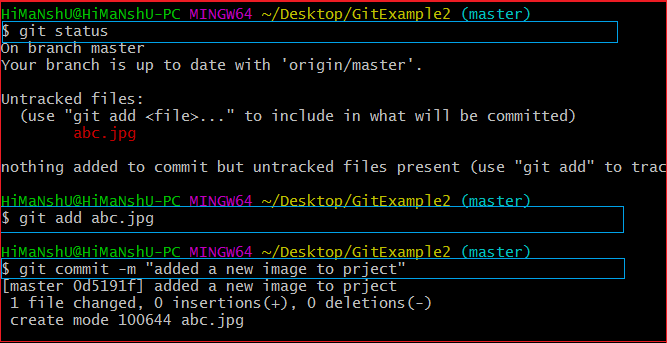
Delta compression using up to 56 threads. You can also push multiple at once $ git push codebase :customer1/add-ext-js-packages :customer1/batch_somefunc :customer1/shrink-somefunc/req/PROJECT-726 Counting objects: 14, done.
PUSH CHANGES TO MASTER GIT PASSWORD
git push origin :įor examples: $ git branch -av * dev master customer1/add-ext-js-packages customer1/batch_somefunc customer1/desktop-upgrade customer1/shrink-somefunc/req/PROJECT-726 $ git push codebase :dev Username for '': kenichi.shibata Password for To - dev $ git branch -av * dev master customer1/add-ext-js-packages customer1/batch_somefunc customer1/desktop-upgrade customer1/shrink-somefunc/req/PROJECT-726Īs you can see it deleted the dev branch on the remote side. There is a lesser known fact that you can delete remote branches by pushing into them.

Similarly it is possible to pull from a local branch to another local branch also branch to branch pushing is branch1:branch2 + 3e205c3.31f2769 master -> customer1/add-ext-js-packages (forced update) master:customer1/add-ext-js-packages Total 0 (delta 0), reused 0 (delta 0) To. Push changes from master to -> customer1/add-ext-js-packages $ git push -force.

This updates your local dev branch using the remote origin master branch Push to a local branchĬheck the branches both remote and local $ git branch -av * master customer1/add-ext-js-packages customer1/batch_somefunc customer1/desktop-upgrade customer1/shrink-somefunc/req/PROJECT-726 This is using the same syntax for pushing git pull origin master:dev This pushses local dev branch to origin master branch Pulling from a different branch

If you want to push to the same remote but a different branch. Notice the two -v flag single -v will only give you the commit messages not including the upstream branch. To be able to check which upstream you are currently referring to run: git branch -avv Once you setup your upstream you only need to do git pushĪnd it will automatically know which remote branch it refers to. Usually you want your branch name on local to be the same branch name on masterįor example: git push -u origin feat/new-feature-toggle Upstream in this context means your default remote tracking. When you push you have the option to setup your upstream. If you are in dev branch locally and you try to push to another branch let's say master you will get this message without actual push $ git branch * dev master customer1/add-ext-js-packages customer1/batch_somefunc customer1/desktop-upgrade customer1/shrink-somefunc/req/PROJECT-726 customer1/upgrade-and-add-elastic-desktop customer2/local-auth customer3/somelib-pipeline-fix $ git push codebase master Everything up-to-date Setting up upstream If the branch does not exists on the remote side it will be automatically created. To see which remotes these are referring to you can add -v flagĭoing a push here will push to the remote with the same branch name $ git push codebase Total 0 (delta 0), reused 0 (delta 0) remote: remote: To create a merge request for dev, visit: remote: remote: To * dev -> devĪs you see it pushes to a branch named dev as well on the remote side.

If you are in dev branch $ git checkout -b dev Switched to a new branch 'dev'Īnd you have these remotes $ git remote codebase origin Pushing to a remote by default pushes to a branch with the same name for example


 0 kommentar(er)
0 kommentar(er)
